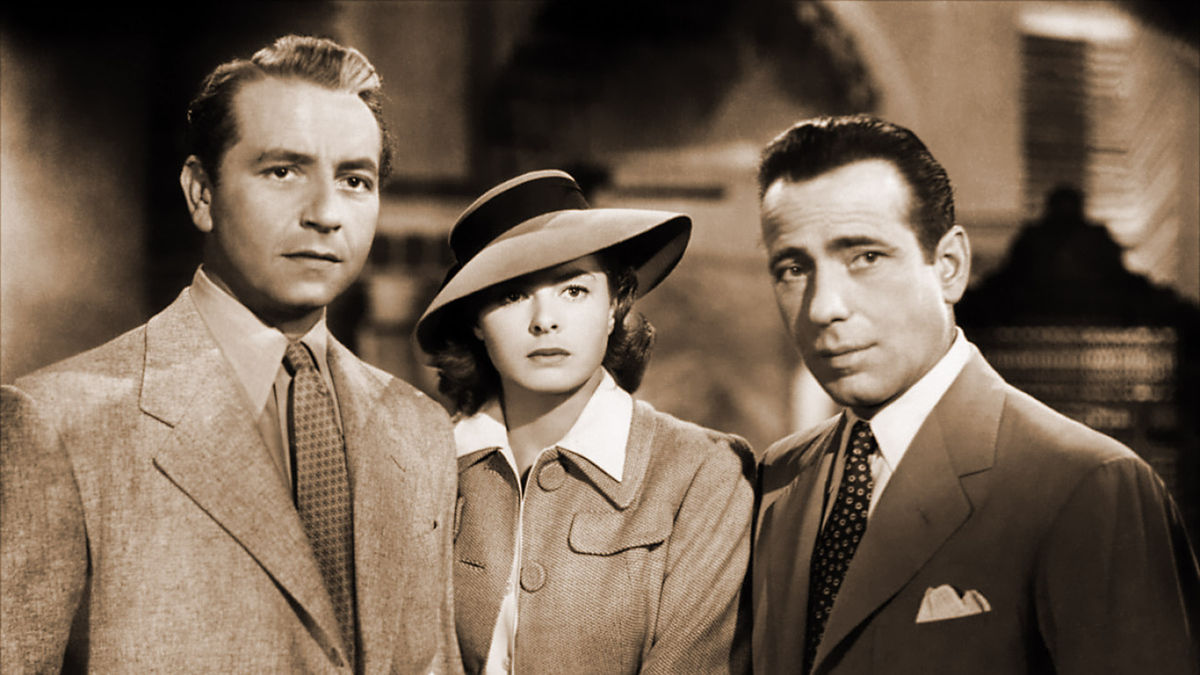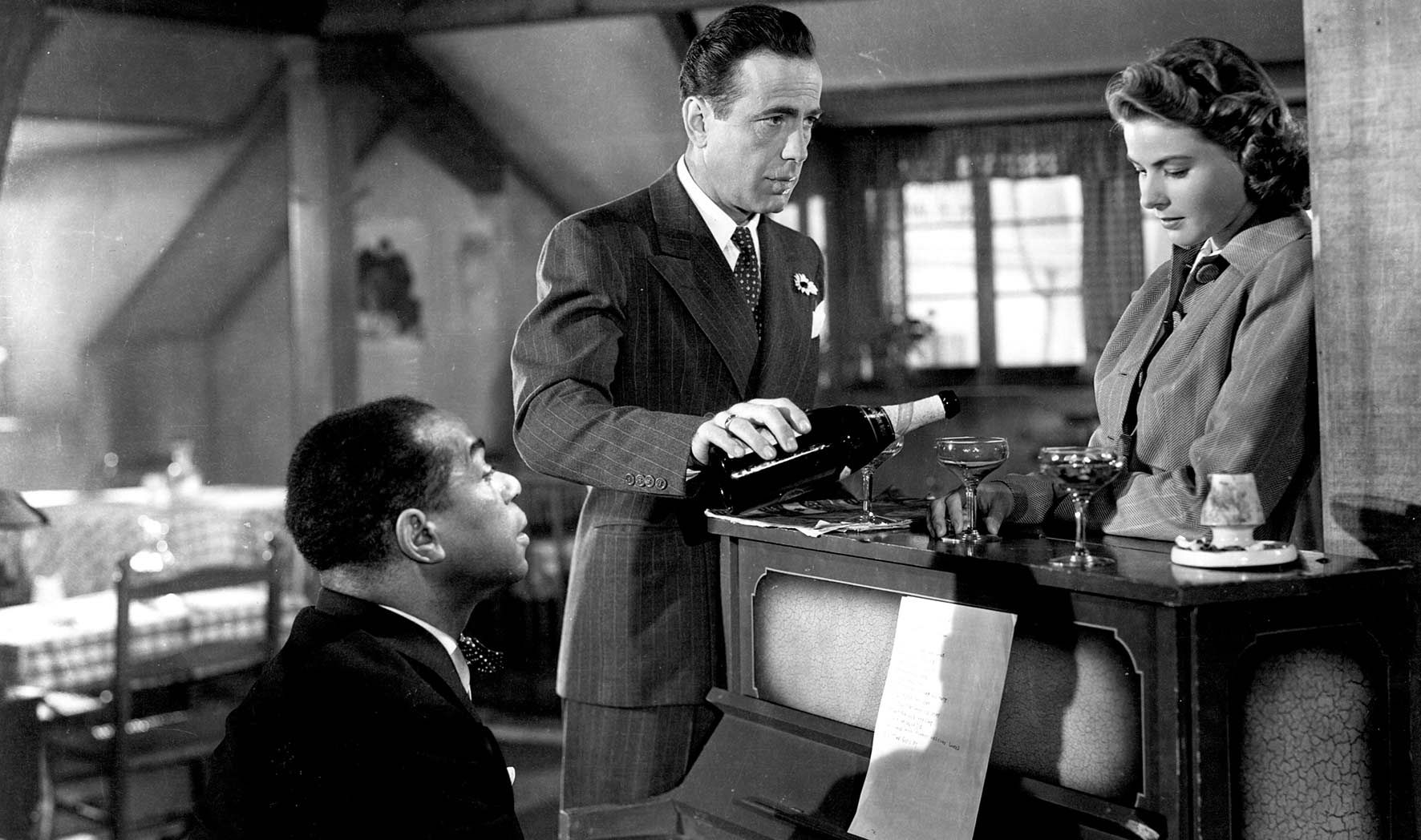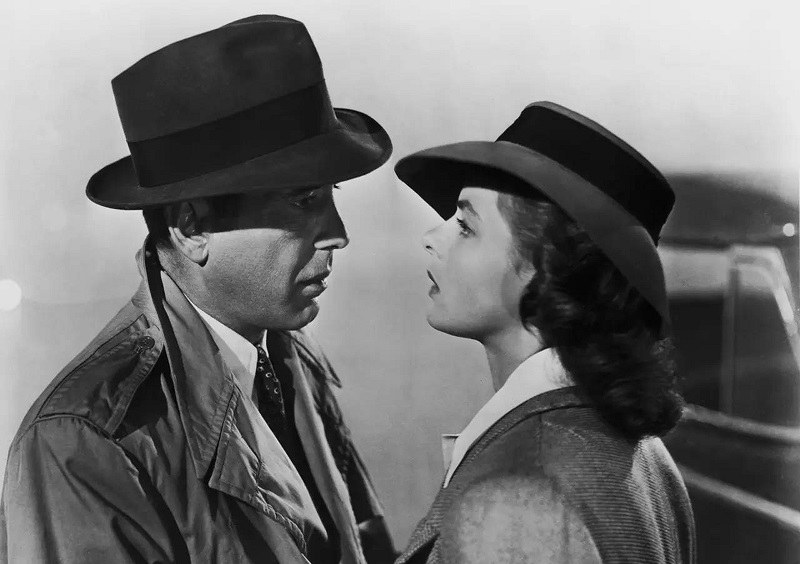Casablanca (1942)

“Casablanca,” directed by Michael Curtiz and released in 1942, stands as one of the most beloved and iconic films in cinematic history. Set during World War II in the city of Casablanca, Morocco, the film intertwines romance, intrigue, and political drama against the backdrop of wartime Europe. With its unforgettable characters, memorable dialogue, and timeless themes, “Casablanca” has captivated audiences for generations and continues to resonate as a cinematic masterpiece that transcends its era.
The film’s narrative unfolds in Rick’s Café Américain, a bustling nightclub and gambling den in Casablanca, a city teeming with refugees fleeing Nazi-occupied Europe. The arrival of fugitive Czech resistance leader Victor Laszlo, played with charismatic intensity by Paul Henreid, sets the stage for a tale of love and sacrifice amidst the chaos of war. At the heart of the story is Rick Blaine, portrayed with suave melancholy by Humphrey Bogart, a cynical expatriate American with a mysterious past.

Central to “Casablanca” is its exploration of love, duty, and moral ambiguity. Rick’s tumultuous past with Ilsa Lund, portrayed with elegance and vulnerability by Ingrid Bergman, is reignited when she walks into his nightclub with Laszlo. Their unresolved romance becomes entangled with the political intrigue surrounding Laszlo’s escape from the clutches of Nazi officials, led by the menacing Major Strasser, played with chilling authority by Conrad Veidt. The film’s screenplay, written by Julius J. Epstein, Philip G. Epstein, and Howard Koch, weaves together themes of sacrifice, redemption, and the complexities of human relationships amidst the backdrop of wartime uncertainty.

Thematically, “Casablanca” explores the moral dilemmas faced by its characters as they navigate the treacherous waters of wartime Casablanca. Rick’s cynical exterior masks a deep sense of idealism and inner conflict, particularly when confronted with the choice between personal desire and larger moral imperatives. His decision to help Ilsa and Laszlo escape to safety represents a profound act of sacrifice that ultimately reaffirms his integrity and sense of duty in the face of tyranny and oppression.

The film’s enduring appeal lies in its richly drawn characters and masterful storytelling. Humphrey Bogart’s portrayal of Rick Blaine has become synonymous with cinematic coolness and moral ambiguity, capturing the essence of a reluctant hero grappling with his own demons. Ingrid Bergman’s Ilsa exudes a timeless elegance and emotional depth, embodying the complexities of love and loyalty amidst turbulent times. The chemistry between Bogart and Bergman is palpable, imbuing their scenes together with a poignant sense of longing and regret.
Visually, “Casablanca” captivates with its atmospheric cinematography and evocative set design. Michael Curtiz’s direction imbues the film with a sense of urgency and tension, as shadows and light play across the faces of its characters, mirroring the moral ambiguities and emotional turmoil they endure. The iconic setting of Rick’s Café Américain, with its smoky interiors and cosmopolitan clientele, becomes a microcosm of the world at war, where alliances are forged and betrayals lurk beneath the surface.

In conclusion, “Casablanca” (1942) stands as a timeless classic that transcends its era to resonate with audiences across generations. Michael Curtiz’s direction, coupled with standout performances from Humphrey Bogart, Ingrid Bergman, and the ensemble cast, elevates the film beyond its wartime setting to a universal exploration of love, sacrifice, and the enduring power of human spirit. By blending romance with political intrigue and moral complexity, “Casablanca” remains a cinematic triumph that continues to inspire and enchant audiences, cementing its place as one of the greatest films ever made.










